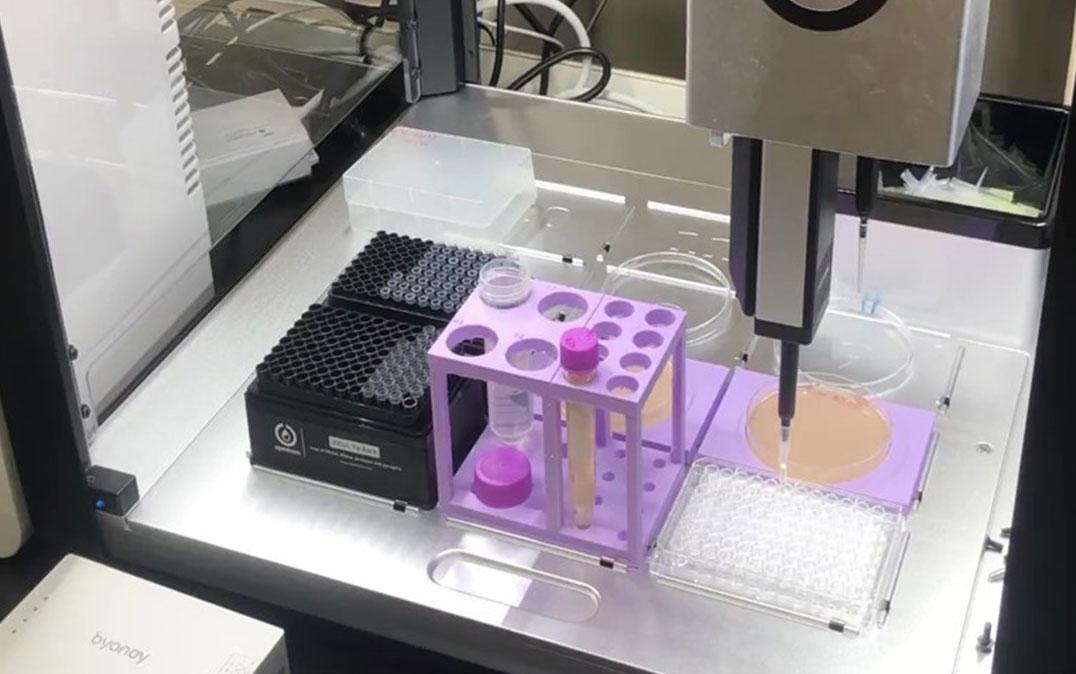Research News
Simple Liquid-Dispensing Robot Automates Experiments to Evaluate Yeast Growth Potential

Automation of life-science experiments has been performed using large, multifunctional robots, and equipment, however, difficulties arise in their installation and expansion. In this study, researchers from the University of Tsukuba have automated yeast cell-proliferation assay experiments using a liquid-dispensing robot that is easy to install and use. This achievement can provide a platform for promoting automation in experiments.
Tsukuba, Japan-Automation of life-science experiments through robots and computers is attracting attention worldwide in various fields, and the advancement of such automation may lead to improved efficiency and reproducibility in life-science research while optimizing the allocation of human resources, including researchers. However, the use of large, multifunctional robots, or specialized equipments has created problems in the implementation of automated experiments, such as increased number of instruments and the difficulty of installing new equipment in regular laboratories. Moreover, there are limited examples of automation of life-science experiments that use robots with simple functions and are relatively easy to install. Hence, the range of capabilities and applications of such robots must be expanded to facilitate and advance the adoption of laboratory automation.
This study developed an automated spot assay system for budding yeast (Saccharomyces cerevisiae), a model eukaryotic organism, using a liquid-dispensing robot that performed simple functions. Spot assays are experiments to evaluate differences in the growth potential of yeast on agar media and are often used in genetics and toxicology. However, to date, automation has been possible only using high-cost methods, such as large robots and specialized equipment. The research team has developed a new method for automatically correcting the variations in the height of agar media and a system for automatically observing and quantifying yeast growth. Based on this, an automated system for spot assays could be developed by connecting it to a liquid-dispensing robot and a flatbed scanner. Quantitative comparisons between automated experiments using the developed robotic system and manual experiments performed by humans showed that the accuracy of the automated spot assay experiments was comparable to that of the manual experiments.
The achievements of this research are expected to facilitate the adoption of automated experiments by a wide range of researchers. The new system will also serve as the technological foundation for the automation of AI-driven experiments and larger-scale yeast experiments.
###
This work was supported by the JST-Mirai Program (JPMJMI18G4, to H.O.) and JSPS KAKENHI (22K06074, to K.I., and 21K06145, to Y.S.).
Original Paper
- Title of original paper:
- Automation of yeast spot assays using an affordable liquid handling robot
- Journal:
- SLAS technology
- DOI:
- 10.1016/j.slast.2022.12.001
Correspondence
Associate Professor OZAKI HarukaInstitute of Medicine, University of Tsukuba
Related Link
Institute of Medicine
Artificial Intelligence Research Center (AIRC)





